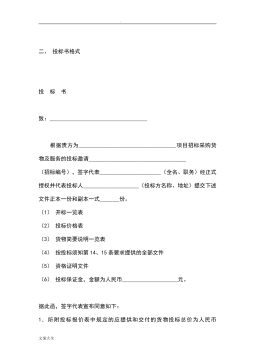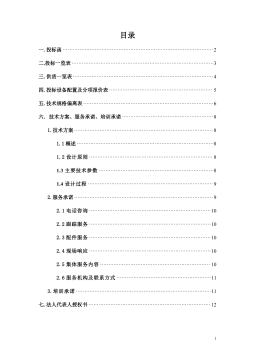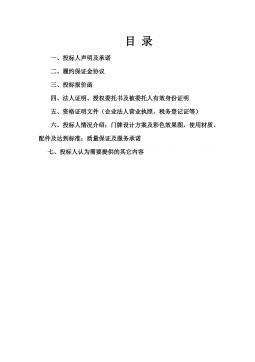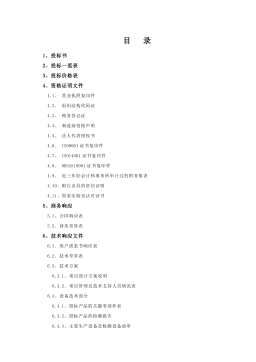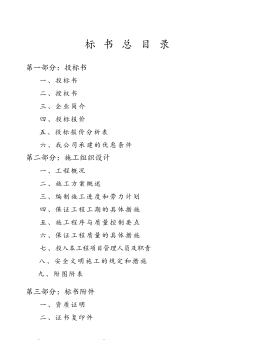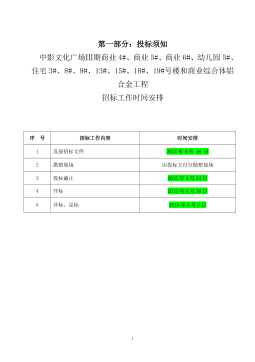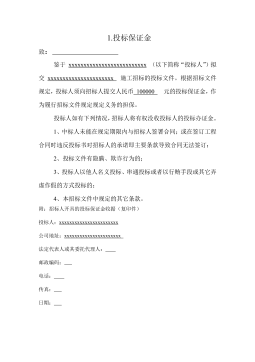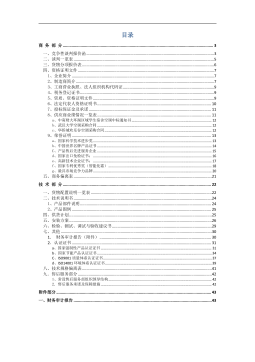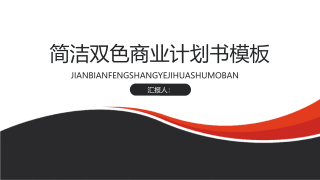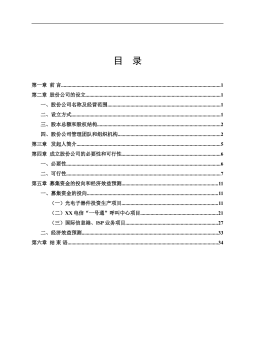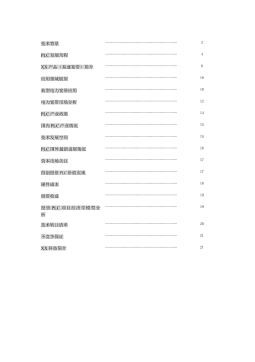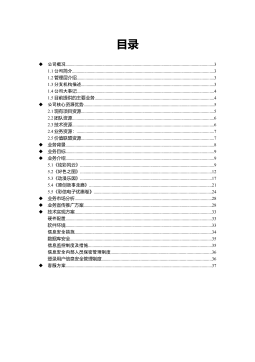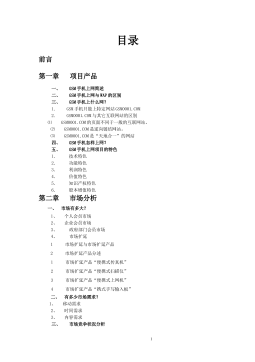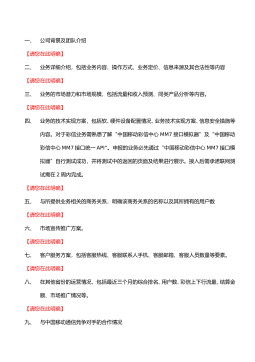内外失衡与美国金融危机的形成
VIP免费
硕士学位论文
VI
摘要
2008 年9月美国次贷危机最终发展成为金融危机,并对世界经济发展造成了
巨大冲击。美国金融机构大量倒闭,经济增长陷入低潮,美国经济的低迷使得世
界各国股市狂跌,经济发展走入低谷。与此同时,美国存在着以储蓄赤字与财政
赤字为代表的内部失衡和以经常账户逆差为代表的外部失衡,并且这种失衡长期
存在于美国经济发展过程。
本文从美国内外经济失衡角度对金融危机进行了研究。内部失衡表现为个人储
蓄赤字和政府财政赤字,外部失衡表现为经常账户的逆差。美国居民的超前消费
和借贷消费是形成美国个人储蓄赤字重要原因,而美国政府的支出远大于收入是
形成财政赤字的重要原因。内外失衡之间存在着紧密的联系:内部失衡是外部失
衡的根源,外部失衡又加剧了内部失衡的发展。由于“米德冲突”的存在,美国
政府着眼于内部失衡的解决,而对外部失衡关注较少。
本文使用定性分析法分析了美国内外部失衡的表现及其相互关系,使用定量分
析法分析了美国经常账户失衡的原因。同时,内外失衡的发展是个变化过程,因
此本文又综合运用了均衡分析法和历史分析法,从而更好地分析内外失衡与金融
危机的关系。美国的信用危机表现为三个赤字:储蓄赤字表现为个人负债,财政
赤字表现为政府负债,而经常账户赤字表现为整个社会的负债。美国政府通过资
本金融账户顺差的巨额资金来支撑消费和经济增长。
经常账户与 GDP,投资和政府支出紧密相关,投资和政府支出的居高不下是
形成美国外部失衡的重要原因。本文认为美国的内外失衡经济增长方式存在较大
的风险,这种增长方式是不可持续的。美国居民、政府和社会负债的长期积累导
致债权人担心债务的偿还能力,致使其停止为美国的消费融资,这导致了美国金
融危机的爆发。可以说,内外失衡共同促使了金融危机的发生,金融危机是美国
内外失衡经济增长方式不可持续的表现。
本文的创新之处在于:在对内部失衡进行分析,采用定性分析方法对美国的储
蓄赤字、财政赤字的相互关系进行阐述,重点指出这种内部的失衡何时不可持续;
在分析外部失衡时,采用经常账户的跨时分析方法得出了经常账户的预测值,并
将危机前后的经常账户实际值与预测值进行了对比。结果发现,金融危机发生前,
经常账户预测值与实际值之间的差距突然加大,而危机发生后二者的差距又减小,
这说明经常账户实际值与预测值差距的大小可以预测金融危机。
根据内外失衡与金融危机的关系,文章提出了应对金融危机避免危机再次发生
的政策建议。这些建议包括改善美国投资高于储蓄的经济状况,进行经济结构的
硕士学位论文
VII
优化调整以及改革国际货币金融体系,协调各国金融监管。美国金融危机对我国
是机遇与挑战并存,机遇大于挑战,为应对危机应该坚定不移地扩大我国的内需,
改善我国外贸依存度过高的局面并抓住机遇对我国的经济结构优化升级。
文章结构如下:首先对美国内外失衡的表现及其相互关系进行了分析。其次,
对美国经济内部失衡进行了研究:个人储蓄赤字和政府财政赤字是美国内部失衡
的表现和原因,正是在二者的共同作用下才导致了美国内部失衡和金融危机。再
次,利用经常账户的跨时分析方法对美国经济的外部失衡进行了研究,并将实证
分析得到的经常账户预测值与实际值进行对比,以确定美国经常账户失衡与金融
危机的关系。最后,进行总结并提出了应对金融危机的政策建议。
关键词:美国金融危机;内部失衡;外部失衡;拉姆齐模型;经常账户跨时分析
硕士学位论文
VIII
ABSTRACT
U.S. Subprime Mortgage Crisis has finally developed into financial crisis in
September 2008. Financial crisis has created huge impact on world economic
development. Many U.S. financial institutions go bankruptcy, it economic growth rate is
at low ebb. The U.S. economy's downturn makes the world stock markets plunged and
world economic development goes into the trough. Meanwhile, there has been exists
economic imbalances in the long-term process of U.S. economic development. The U.S.
economic imbalances include internal imbalances and external imbalances. The internal
imbalance is represented by the savings deficits and fiscal deficits, while the external
imbalance is represented by current account deficits.
In this paper, we make a study on the relationship between internal and external
imbalances and the formation of U.S. financial crisis. The U.S. internal imbalance is
performed by the personal savings deficits and the government's budget deficit, while
the U.S. external imbalance is manifested by current account deficit. The U.S. residents’
ahead of consumption and borrowing consumption is an important reason for the
formation of personal savings deficit, while the U.S. government's spending is far
greater than income is an important reason for the formation of the fiscal deficit.There is
a close link between internal and external imbalances: internal imbalances are the root
causes of external imbalances, internal imbalances exacerbated by the development of
external imbalances. Because of "Meada conflict" exists, the U.S. government pay more
attention to internal imbalances, but pay less attention to external imbalances.
The author uses qualitative method to analysis the performance of U.S. internal
imbalances. The author uses quantitative method to analysis external imbalances in
order to learn the causes of U.S. current account deficits. Meanwhile, for the
development of internal and external imbalances is a dynamic process, the author has
integrated balanced analysis and historical analysis in order to better analyze economic
imbalances and financial crisis and their relationship.
There are three aspects of U.S. credit crisis: savings deficit which is performed by
individual debt, fiscal deficits which show by government's debt and current account
deficit which show by whole community liabilities. U.S. government keeps their
consumption and economic growth through capital financial account surplus.
There is closely relationship among current account, GDP and investment. The
硕士学位论文
IX
high investment rate and government expenditure is an important reason for U.S.
external imbalances. This paper argues that there is a big risk to exist in U.S. economic
growth and this growth way is unsustainable. U.S. residents, government and society's
long-term accumulation of debt led to the creditors' doubt about debt repayment
capacity, so they in turn stop finance United States' consumption, which finally led to
U.S. financial crisis. We can say that internal and external imbalances have prompted
the outbreak of financial crisis. Financial crisis is the performance of U.S. unsustainable
economic growth.
Through the performance of internal and external imbalances and relationship
between internal and external imbalances, the author argues that there is a big risk for
the U.S. economic growth way and this growth way is unsustainable. Internal and
external imbalance in the United States is a typical "Ponzi scheme", while financial
crisis is the overall outbreak of unsustainable mode of U.S. economic growth way.
The innovation lies in: In the analysis of internal imbalances, the author use
qualitative method to describe the U.S. savings deficit, fiscal deficit and the relationship
between them and highlight when the internal imbalance is unsustainable. In the
analysis of external imbalances, the author use inter-temporal approach of current
account to obtain the predicted value of current account. Then, the author makes
comparison between the actual value and the predicted current account value before and
after the crisis. The results show that before financial crisis happen, the gap between
predicted current account value and actual value suddenly increase, while the crisis has
reduced the gap reduce after the crisis happen. Therefore we can predict financial crisis
by using the gap between predicted current account value and actual value.
According to the relationship between internal and external imbalances and
financial crisis, the article put forward to recommendations to address the financial
crisis and avoid the recurrence of financial crisis. These suggestions include improving
the U.S. savings and investment imbalances situation, improvement of international
monetary and financial system, coordination of national financial regulation, as well as
optimize the national economic structure. For china, U.S. financial crisis is an
opportunity and challenge, but the opportunity is outweigh the challenge. In response to
financial crisis, we should strive to expand domestic demand, improve the situation of
excessive dependence on foreign trade, and seize the opportunity to optimize and
upgrade our economic structure.
The article’s structure as follows: First, we analyze the performance of the U.S.
硕士学位论文
X
internal and external imbalances and their relationship. Secondly, we make a study on
U.S. internal imbalances. Personal savings deficits and government budget deficits are
the causes and performance of U.S. internal imbalances. The occurrence of internal
imbalances and financial crisis is the common result of Personal savings deficits and
government budget deficits. Thirdly, we use inter-temporal approach of current account
to make a study on U.S. external imbalances. We get the predicted values using
empirical analysis of the current account. Then we make a comparison between the
predicted value and actual value to make sure the relationship between current account
imbalance and financial crisis. At last, we make a summary and put forward policy
recommendations to address financial crisis.
Keywords:Financial crisis; Internal imbalances; External imbalances; Ramsey Model;
Inter-temporal approach of current account
硕士学位论文
XI
目录
第一章 导论................................................................................................................... 1
第一节 研究背景与意义......................................................................................1
第二节 国内外相关文献综述..............................................................................3
第三节 研究内容与方法......................................................................................5
第四节 主要观点与不足......................................................................................7
第二章 内部失衡与外部失衡:互相促进机制......................................................... 10
第一节 内外经济失衡及其表现........................................................................10
第二节 内外失衡的互相促进关系....................................................................14
第三节 美国金融危机的形成............................................................................17
第四节 本章小结................................................................................................22
第三章 美国的内部失衡:“双赤字”分析............................................................. 23
第一节 美国的储蓄赤字分析............................................................................23
第二节 美国的财政赤字分析............................................................................26
第三节 双赤字导致的结果................................................................................27
第四节 本章小结................................................................................................29
第四章 美国的外部失衡:经常账户跨时分析......................................................... 30
第一节 经常账户跨时分析:文献综述............................................................30
第二节 跨时分析的理论基础与模型................................................................33
第三节 数据选择及变量处理............................................................................36
第四节 相关变量检验及结果............................................................................38
第五节 本章小结................................................................................................45
第五章 主要结论与政策建议..................................................................................... 46
第一节 主要结论:内外失衡与金融危机的形成............................................46
第二节 金融危机应对政策及我国的选择........................................................47
参考文献......................................................................................................................... 50
附录 1 美国净外部资产.............................................................................................. 54
附录 2 美国现金流量变动量...................................................................................... 56
摘要:
展开>>
收起<<
硕士学位论文VI摘要2008年9月美国次贷危机最终发展成为金融危机,并对世界经济发展造成了巨大冲击。美国金融机构大量倒闭,经济增长陷入低潮,美国经济的低迷使得世界各国股市狂跌,经济发展走入低谷。与此同时,美国存在着以储蓄赤字与财政赤字为代表的内部失衡和以经常账户逆差为代表的外部失衡,并且这种失衡长期存在于美国经济发展过程。本文从美国内外经济失衡角度对金融危机进行了研究。内部失衡表现为个人储蓄赤字和政府财政赤字,外部失衡表现为经常账户的逆差。美国居民的超前消费和借贷消费是形成美国个人储蓄赤字重要原因,而美国政府的支出远大于收入是形成财政赤字的重要原因。内外失衡之间存在着紧密的联系:内部失衡是外部...
作者:周伟光
分类:高等教育资料
价格:150积分
属性:63 页
大小:1.86MB
格式:PDF
时间:2024-09-20


